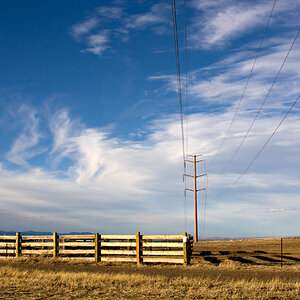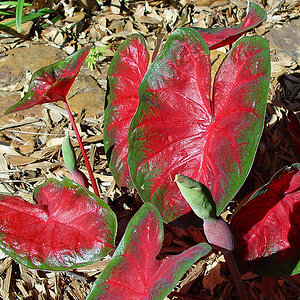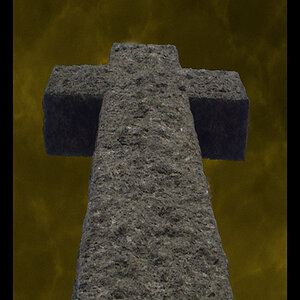photoguy99
No longer a newbie, moving up!
- Joined
- Mar 20, 2014
- Messages
- 1,485
- Reaction score
- 313
A minor altercation in another thread has inspired me to write this up. This is based on a few ideas from here and there, and a few ideas of my own. I consider it a "first cut" and I think it might be interesting to see what other people have to say, modifications and other ideas.
The idea is: what's the shortest path to sufficient technical mastery of the camera to be able to communicate a rich range of visual ideas. Auto mode doesn't do that, I claim, because a "rich range" needs to be more than the placement of forms and objects into the frame.
Obviously there's room for discussion of what is and is not a minimum requirement for "rich range" but I think it would be really nice if we could generally accept some somewhat grey boundaries.
Note that, while I oppose the dogmatic use of Manual Mode, this course is based on it. It seems the shortest path, and eliminates a lot of discussion of metering comma what does it really mean and exposure compensation etc etc.
Without further ado, here goes:
Step 1.
Set your camera to Manual Mode, and figure out where the meter is in the display. Figure out when the meter is "zeroed" or whatever, indicating "correct exposure" and get some practice twiddling dials to make it do that. You should work out how to adjust these three things: Shutter Speed, Aperture, ISO. Don't worry about what they ARE, just learn how to change them, and see what the meter does.
In fact, don't worry about what any of it actually means. Just wave the camera around, adjust things to "zero the meter" whatever that means. You're just getting familiar with controls.
Step 2.
This is in three parts. You will take 5 pictures in each part.
2a: find someplace where there are objects in motion. Cars or people passing. Running water, perhaps. Point the camera such that objects will go past it from time to time. Set the SHUTTER speed to 1/30 and then zero the meter with the two other controls. If you can't zero the meter, pick another shutter speed until you can, but let's assume you picked 1/30.
Take a picture.
Now without making any other changes, take the same picture at 4 more shutter speeds, two on each side of 1/30. DO NOT worry about the meter. Let the meter go. Move the shutter speed a click or two one way. Take a picture. Another couple clicks. Take a picture. Go back to the middle and go the other way now for two more photos.
Look at the pictures. The brighter ones should be blurrier, and brighter. The darker ones are sharper and darker. What's blurry? What's not?
2b. Same experiment, but you're adjusting APERTURE. Instead of moving objects, find somewhere where there are nearer objects, and farther objects. Set the aperture to about f/8.0 (but anything will do, as long as you can go up and down from the setting. Zero the meter and take a picture. Change the aperture several clicks one way, and then several more. Go back to the middle and go several clicks the other way, and then several more. Let the meter do what it will, and leave the other controls alone.
As an added tweak here, it might be best to set the lens on Manual focus. Focus as best you can and then leave it alone. The put it back to Autofocus, if such a thing exists on your camera.
Look at the pictures. Some will be darker, some brighter. More things in the frame will be sharp in the darker ones, and fewer things in the brighter one.
2c. Same experiment, but adjust ISO. Your location should ideally be colorful and have quite a bit of detail. For some reason people always use bookshelves for this one. Start with an ISO of 800, zero the meter, take a picture. Go one click down, then another. Back to 800, one click up, then another.
The brighter ones will, probably, be fuzzier and grainier/noisier. The darker ones less so.
Step 3.
You now have 15 pictures which tell you pretty much everything there is to know about shutter speed, aperture, and ISO. Study them. Think about it.
Go repeat the experiment, if you like. Did you use cars for 2a? Try it with people. Try moving the camera. Did you use a tabletop for the near/far in 2b? Use a landscape instead. Did you do it in daylight in 2c? Try it indoors.
Study the pictures.
There's an afternoon used up. If you're new to this, you're going to want to pull these photos out from time to time and stare at them, or re-do the experiments from time to time, and stare at the results, until it's just second nature what the actual visual effects are.
A final tip: all these effects combine in the obvious ways. For example, changing the shutter speed one way makes the picture too bright, but changing the aperture the other way will darken it back down, and you will get BOTH of the visual effects of the shutter speed change and the aperture change.
Whatever shutter speed and aperture even are. Who cares?
----
Probably something on getting into a useful AF mode would be good, but that's pretty camera specific, isn't it? I don't trust modern AF systems to do the right thing if left alone, but I am possibly just a curmudgeon.
A case can be made that at least an approximate understanding of white balance ought to be in even a minimalist toolkit. What's a good short path to that? On the other hand, AWB's pretty good.
A stronger case can be made that an understanding of the fundamentals of flash photography ought to be in there too. Anyone care to devise a 2-hour program that gets your foot in the door?
The idea is: what's the shortest path to sufficient technical mastery of the camera to be able to communicate a rich range of visual ideas. Auto mode doesn't do that, I claim, because a "rich range" needs to be more than the placement of forms and objects into the frame.
Obviously there's room for discussion of what is and is not a minimum requirement for "rich range" but I think it would be really nice if we could generally accept some somewhat grey boundaries.
Note that, while I oppose the dogmatic use of Manual Mode, this course is based on it. It seems the shortest path, and eliminates a lot of discussion of metering comma what does it really mean and exposure compensation etc etc.
Without further ado, here goes:
Step 1.
Set your camera to Manual Mode, and figure out where the meter is in the display. Figure out when the meter is "zeroed" or whatever, indicating "correct exposure" and get some practice twiddling dials to make it do that. You should work out how to adjust these three things: Shutter Speed, Aperture, ISO. Don't worry about what they ARE, just learn how to change them, and see what the meter does.
In fact, don't worry about what any of it actually means. Just wave the camera around, adjust things to "zero the meter" whatever that means. You're just getting familiar with controls.
Step 2.
This is in three parts. You will take 5 pictures in each part.
2a: find someplace where there are objects in motion. Cars or people passing. Running water, perhaps. Point the camera such that objects will go past it from time to time. Set the SHUTTER speed to 1/30 and then zero the meter with the two other controls. If you can't zero the meter, pick another shutter speed until you can, but let's assume you picked 1/30.
Take a picture.
Now without making any other changes, take the same picture at 4 more shutter speeds, two on each side of 1/30. DO NOT worry about the meter. Let the meter go. Move the shutter speed a click or two one way. Take a picture. Another couple clicks. Take a picture. Go back to the middle and go the other way now for two more photos.
Look at the pictures. The brighter ones should be blurrier, and brighter. The darker ones are sharper and darker. What's blurry? What's not?
2b. Same experiment, but you're adjusting APERTURE. Instead of moving objects, find somewhere where there are nearer objects, and farther objects. Set the aperture to about f/8.0 (but anything will do, as long as you can go up and down from the setting. Zero the meter and take a picture. Change the aperture several clicks one way, and then several more. Go back to the middle and go several clicks the other way, and then several more. Let the meter do what it will, and leave the other controls alone.
As an added tweak here, it might be best to set the lens on Manual focus. Focus as best you can and then leave it alone. The put it back to Autofocus, if such a thing exists on your camera.
Look at the pictures. Some will be darker, some brighter. More things in the frame will be sharp in the darker ones, and fewer things in the brighter one.
2c. Same experiment, but adjust ISO. Your location should ideally be colorful and have quite a bit of detail. For some reason people always use bookshelves for this one. Start with an ISO of 800, zero the meter, take a picture. Go one click down, then another. Back to 800, one click up, then another.
The brighter ones will, probably, be fuzzier and grainier/noisier. The darker ones less so.
Step 3.
You now have 15 pictures which tell you pretty much everything there is to know about shutter speed, aperture, and ISO. Study them. Think about it.
Go repeat the experiment, if you like. Did you use cars for 2a? Try it with people. Try moving the camera. Did you use a tabletop for the near/far in 2b? Use a landscape instead. Did you do it in daylight in 2c? Try it indoors.
Study the pictures.
There's an afternoon used up. If you're new to this, you're going to want to pull these photos out from time to time and stare at them, or re-do the experiments from time to time, and stare at the results, until it's just second nature what the actual visual effects are.
A final tip: all these effects combine in the obvious ways. For example, changing the shutter speed one way makes the picture too bright, but changing the aperture the other way will darken it back down, and you will get BOTH of the visual effects of the shutter speed change and the aperture change.
Whatever shutter speed and aperture even are. Who cares?
----
Probably something on getting into a useful AF mode would be good, but that's pretty camera specific, isn't it? I don't trust modern AF systems to do the right thing if left alone, but I am possibly just a curmudgeon.
A case can be made that at least an approximate understanding of white balance ought to be in even a minimalist toolkit. What's a good short path to that? On the other hand, AWB's pretty good.
A stronger case can be made that an understanding of the fundamentals of flash photography ought to be in there too. Anyone care to devise a 2-hour program that gets your foot in the door?


![[No title]](/data/xfmg/thumbnail/41/41779-303c41fcb3e37507cbe986d76dbfcf85.jpg?1619739890)
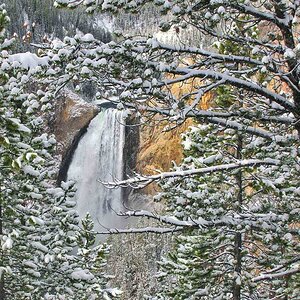

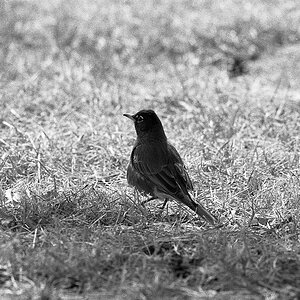
![[No title]](/data/xfmg/thumbnail/38/38734-a0c4ec46a440db881aca3700b0c62879.jpg?1619738703)
![[No title]](/data/xfmg/thumbnail/30/30885-2764c7a15a288ed06f3903d3a2756832.jpg?1619734497)
![[No title]](/data/xfmg/thumbnail/38/38737-350089c7ae87f5c983c5362b9b78b671.jpg?1619738703)
